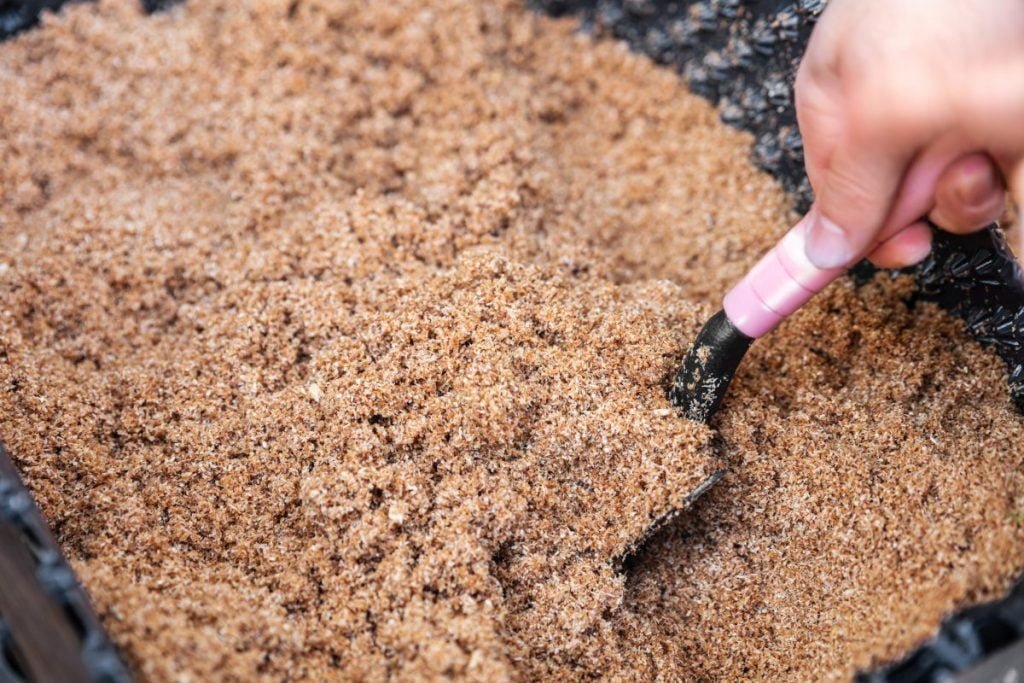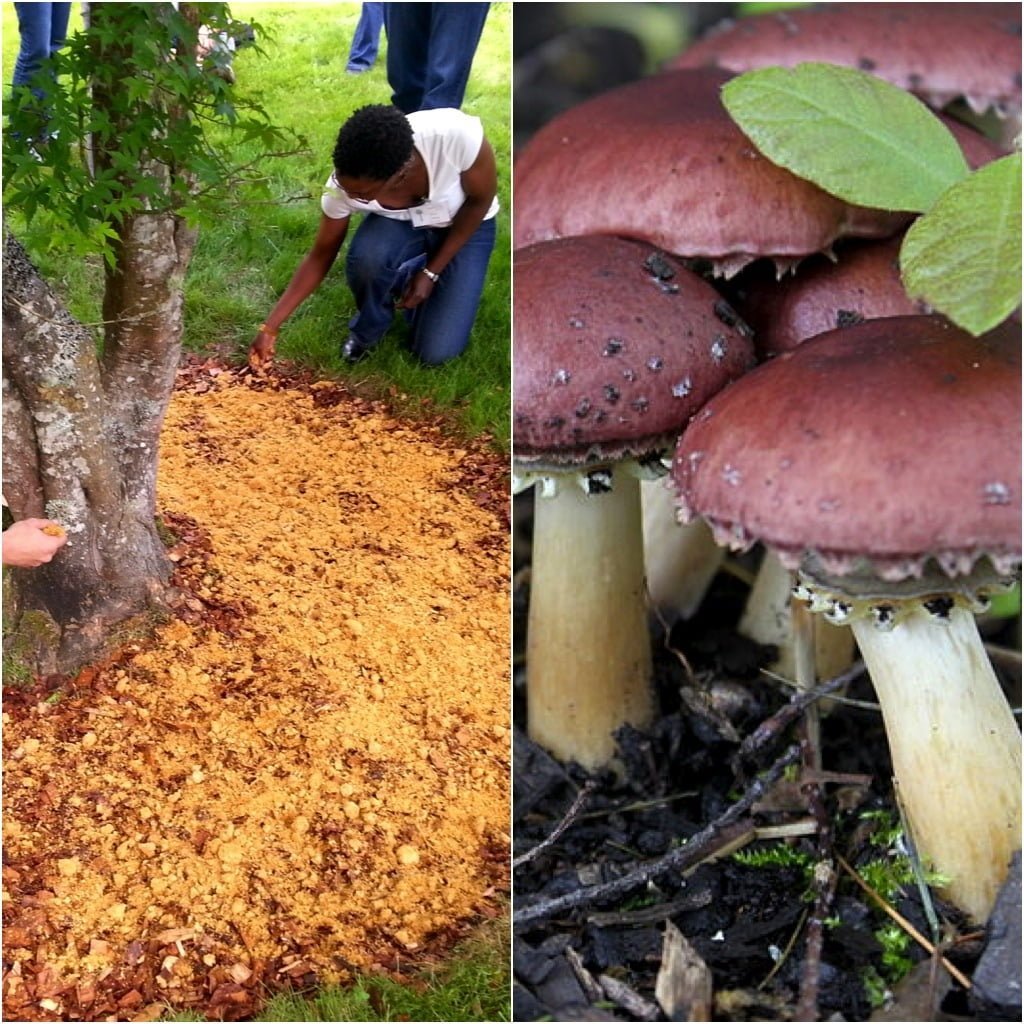The Magic of Sawdust and Wood Chips: A Guide to Perfecting Your Mushroom Cultivation
Mushroom cultivation has gained popularity in recent years due to the increasing demand for fresh and organic mushrooms. One of the key factors in successful mushroom cultivation is the choice of substrate, which provides the necessary nutrients for mushroom growth. Sawdust and wood chips are commonly used as substrates in mushroom cultivation due to their availability, affordability, and ability to support the growth of various mushroom species.
Sawdust and wood chips are excellent substrates for mushroom cultivation because they provide a rich source of nutrients for the mushrooms. They contain carbohydrates, proteins, and minerals that are essential for the growth and development of mushrooms. Additionally, sawdust and wood chips have a high water-holding capacity, which helps to maintain the moisture levels required for optimal mushroom growth.
Understanding the Role of Sawdust and Wood Chips in Mushroom Growth
Sawdust and wood chips play a crucial role in providing the necessary nutrients for mushroom growth. Mushrooms are heterotrophic organisms, meaning they obtain their nutrients from organic matter. Sawdust and wood chips are rich in lignocellulosic materials, which serve as a food source for mushrooms. The lignin in sawdust and wood chips is broken down by fungi through a process called ligninolysis, releasing nutrients that can be absorbed by the mushrooms.
Choosing the right type of sawdust and wood chips is essential for successful mushroom cultivation. Different types of wood have different nutrient compositions, which can affect the growth and yield of mushrooms. Hardwoods such as oak, beech, and maple are commonly used for mushroom cultivation due to their high nutrient content. Softwoods such as pine and fir can also be used but may require additional supplementation to provide sufficient nutrients for mushroom growth.
Choosing the Right Type of Sawdust and Wood Chips for Your Mushroom Cultivation
There are several types of sawdust and wood chips available for mushroom cultivation, each with its own pros and cons. Oak sawdust is a popular choice due to its high nutrient content and ability to support the growth of a wide range of mushroom species. Beech sawdust is another common choice, known for its high water-holding capacity and suitability for oyster mushrooms. Maple sawdust is favored for its neutral pH and ability to support the growth of various mushroom species.
When choosing wood chips, it is important to consider their size and moisture content. Smaller wood chips provide a larger surface area for colonization by mushroom mycelium, while larger wood chips may take longer to decompose. It is also important to ensure that the wood chips are properly dried to prevent the growth of competing organisms that can hinder mushroom growth.
Preparing Your Sawdust and Wood Chips for Mushroom Cultivation
Before using sawdust and wood chips as a substrate, they need to be properly prepared to create an optimal environment for mushroom growth. The first step is to sterilize the sawdust or wood chips to eliminate any competing organisms that may hinder mushroom growth. This can be done using various methods such as steam sterilization, hot water pasteurization, or chemical sterilization.
After sterilization, the sawdust or wood chips need to be hydrated to achieve the desired moisture content. This can be done by soaking them in water or by adding water gradually while mixing until the desired moisture level is reached. It is important to ensure that the substrate is evenly moist throughout, as uneven moisture levels can lead to uneven mushroom growth.
Sterilizing Your Sawdust and Wood Chips for Optimal Mushroom Growth
Sterilization is a crucial step in mushroom cultivation as it eliminates any competing organisms that may hinder mushroom growth. Steam sterilization is one of the most common methods used for sterilizing sawdust and wood chips. It involves placing the substrate in a sterilization bag or container and subjecting it to high-pressure steam for a specific period of time.
Hot water pasteurization is another method that can be used to sterilize sawdust and wood chips. It involves soaking the substrate in hot water for a specific period of time to kill off any competing organisms. Chemical sterilization can also be used, but it is important to choose a sterilizing agent that is safe for mushroom cultivation and does not leave any harmful residues.
Inoculating Your Sawdust and Wood Chips with Mushroom Spawn
Once the sawdust or wood chips have been sterilized and hydrated, they are ready to be inoculated with mushroom spawn. Mushroom spawn is a mixture of mycelium, which is the vegetative part of the fungus, and a substrate such as grain or sawdust. The mycelium will colonize the substrate and eventually produce mushrooms.
To inoculate the substrate, the mushroom spawn is mixed thoroughly with the sawdust or wood chips. The mixture is then placed in a container or bag and sealed to create a sterile environment for the mycelium to grow. It is important to ensure that the spawn is evenly distributed throughout the substrate to promote uniform colonization.
Maintaining the Right Temperature and Humidity for Your Mushroom Cultivation
Temperature and humidity are critical factors in mushroom cultivation as they directly affect the growth and development of mushrooms. The ideal temperature for most mushroom species is between 65-75°F (18-24°C). It is important to maintain a consistent temperature throughout the cultivation process to prevent fluctuations that can stress the mushrooms.
Humidity levels also play a crucial role in mushroom cultivation as they affect the moisture content of the substrate and the air surrounding the mushrooms. The ideal humidity level for most mushroom species is around 90%. This can be achieved by misting the substrate and maintaining a humid environment using methods such as misting, using a humidifier, or placing trays of water near the cultivation area.
Caring for Your Mushroom Culture as it Grows
As your mushroom culture grows, it is important to provide proper care to ensure optimal growth and yield. Mushrooms go through different stages of growth, including colonization, pinning, and fruiting. During the colonization stage, it is important to maintain a clean and sterile environment to prevent contamination. This can be done by regularly sanitizing the cultivation area and monitoring for any signs of contamination.
During the pinning stage, which is when small mushroom pins start to form, it is important to maintain high humidity levels to promote proper development. This can be achieved by misting the substrate and maintaining a humid environment. It is also important to provide proper air circulation to prevent the formation of mold or other fungal contaminants.
During the fruiting stage, it is important to provide proper lighting conditions for the mushrooms to develop properly. Mushrooms require light to trigger the production of pigments and to promote proper growth. Natural light or artificial light sources such as fluorescent or LED lights can be used to provide the necessary light for mushroom development.
Harvesting Your Mushrooms from Sawdust and Wood Chips
Harvesting your mushrooms from sawdust and wood chips requires careful attention to ensure optimal growth in future harvests. Mushrooms should be harvested when they are fully mature but before they release their spores. This is usually when the caps have fully opened and the gills underneath are visible.
To harvest mushrooms, gently twist or cut them at the base of the stem, being careful not to damage the surrounding mycelium. It is important to harvest mushrooms in a timely manner to prevent over-maturity, which can lead to a decrease in quality and flavor. After harvesting, it is important to clean and sanitize the cultivation area to prevent the growth of contaminants.
Tips and Tricks for Perfecting Your Mushroom Cultivation with Sawdust and Wood Chips
To perfect your mushroom cultivation with sawdust and wood chips, there are several tips and tricks that can be followed. Firstly, it is important to maintain a clean and sterile environment throughout the cultivation process to prevent contamination. This can be achieved by regularly sanitizing the cultivation area and using proper hygiene practices.
Secondly, it is important to monitor the temperature and humidity levels closely to ensure optimal mushroom growth. Fluctuations in temperature or humidity can stress the mushrooms and hinder their growth. Using a thermometer and hygrometer can help in monitoring these levels accurately.
Lastly, it is important to experiment with different techniques and methods to find what works best for your specific mushroom species and growing conditions. Mushroom cultivation is a learning process, and by trying different techniques, you can discover what works best for you and achieve optimal results.
Unlocking the Magic of Sawdust and Wood Chips in Mushroom Cultivation
In conclusion, sawdust and wood chips are excellent substrates for mushroom cultivation due to their nutrient content, water-holding capacity, and availability. By understanding the role of sawdust and wood chips in mushroom growth, choosing the right type of substrate, properly preparing and sterilizing the substrate, inoculating with mushroom spawn …, you can unlock the magic of sawdust and wood chips in mushroom cultivation.
So why not give it a try and embark on your own mushroom cultivation journey?
Originally posted 2024-04-01 14:06:46.


